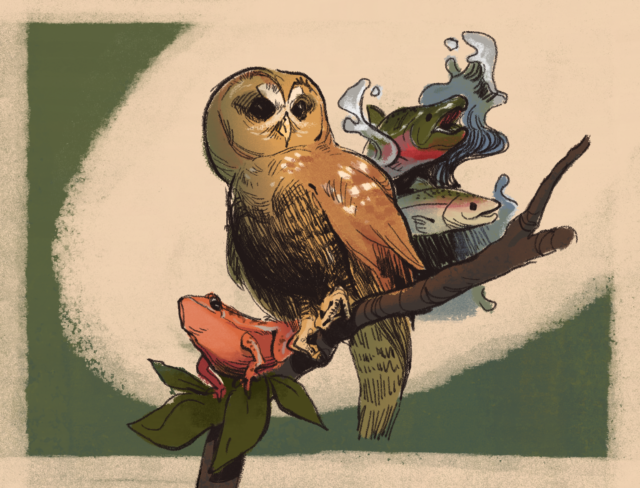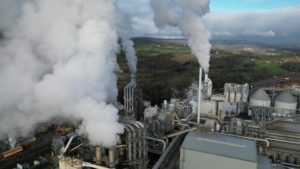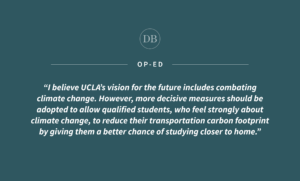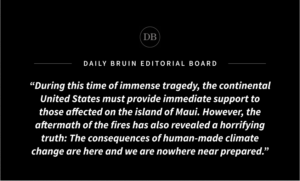As Earth Day approaches on April 22, Bruins are reminded to protect the environment and be aware of how climate change and habitat loss affect endangered species.
California categorizes around 250 endangered or threatened species under the California Endangered Species Act, according to the California Department of Fish and Wildlife. A species listed under CESA requires authorization to be killed, bought, sold or owned. According to the United States Fish and Wildlife Service, an endangered species is in danger of extinction throughout its habitats, while a threatened species may become endangered.
The 1973 U.S. Endangered Species Act also provides protections for animals and plants in danger of extinction, and the ESA currently protects over 1,300 species.
Associate professor of ecology and evolutionary biology Morgan Tingley said listing a species under the ESA can take time. According to the U.S. Fish and Wildlife Service, a species or subspecies may be listed through federal agencies gathering data about possible candidate species or through said species receiving petitions from the public, then there is a comment period and a final decision by the government.
“It’s really hard to get species listed these days,” Tingley said. “It’s a very, very political process. … The Endangered Species Act is a very, very strong and powerful tool for conservation and for good, but it means that a lot of humans’ lives have to change to work around the protection of that animal.”
According to CNN, the Joe Biden administration recently reinstated blanket rule protections for threatened species and added a new regulation that forbids agencies from considering the economic consequences of listing a species, a factor that previously hindered species from being listed. The new provisions under the Biden administration will also account for damage caused by climate change as global ocean temperatures rise.
Environmental law professor James Salzman said climate change can negatively affect the natural processes of different species.
“The average sea levels are rising, temperatures are rising, … which are all consistent to modeling for human-caused climate change,” Salzman said. “We have species that evolved over many, many, many years for particular types of climates and timing.”
Tingley said climate change can interrupt the stability of species such as the California spotted owl, which is in the process of being listed as an endangered species.
“The spotted owl in California … needs forests with really big trees that have been around for hundreds of years.” Tingley said. “As we make the world warmer, basically everything becomes less stable, and so species that like stability are generally more likely to be endangered.”
According to the U.S. Fish and Wildlife Service, the California spotted owl lives in the forests of the Sierra Nevada mountain range and southern and coastal California. The extremes of drought conditions in the summers and heavy rains in the nesting season exacerbated by climate change reduce the capability for the species to produce offspring, which limits the population, according to the Species Status Assessment Report.
Doctoral student in the Department of Ecology and Evolutionary Biology Katie Adler studies behavioral ecology. She worked in the RiverLab during her undergraduate studies at UC Berkeley and saw how dried-up bodies of water can affect species such as the California red-legged frog.
“We are impacting the breeding grounds of those frogs since they need running water (and) enough oxygen in the water to survive and breed,” Adler said.
Adler added that she attended an academic conference for Mount Diablo during her undergraduate studies at UC Berkeley to make suggestions for environmental solutions after working with threatened species such as steelhead trout and coho salmon.
The coho salmon is federally threatened in Northern California and endangered in Central California, while the steelhead trout is endangered in Southern California and threatened in Central California. The population of coho salmon is declining because of habitat loss, fish hatcheries, overfishing and changing climates.
While periods of drought with dry bodies of water can harm amphibians, Salzman said megafloods can also negatively impact species. A 2022 study in Science Advances found that climate change has doubled the probability of flooding in California.
“It (a megaflood) can destroy the habitat, … but it’s the shift in climate and timing and severity that’s going to be more significant over the longer term,” Salzman said. “There are always periodic, disastrous flooding events. That’s not new, but the frequency of them and the magnitude is different.”
While climate change and other factors can negatively impact a variety of species, there are ways to become involved in helping endangered species. Salzman said voting, volunteering and supporting environmental groups are ways to conserve species variety.
“The single most important thing they (students) can do is to vote for candidates who publicly promote conservation as one of their goals,” Salzman added. “Second thing is to support local environmental groups, local conservation groups.
Adler said after working with endangered species such as the California red-legged frog, she cautions people to be careful not to accidentally harm habitats while hiking.
“They rely on really sensitive ecosystems,” Adler said. “If you have a hiking trail over what’s usually a stream that’s providing water, the water is not going to run through as well, so then there’s going to be less breeding habitat for the frogs. And so, even when you’re just going out on a trail, you have to be mindful of where you’re stepping.”
The Institute of the Environment and Sustainability at UCLA and the UCLA/La Kretz Center for California Conservation Science research the environment, climate change and conservation. Bruins can become involved by working in one of the laboratories.
IoES also has a Sustainability Action Research program in which students can create a project for environmental conservation on campus.
Tingley said helping endangered species and reducing the impact of climate change requires a global conscious effort.
“The globe as a community can help stop climate change and reverse climate change,” Tingley added. “We all have the need to be active participants in the global movement towards reducing fossil fuel use, increasing energy efficiency, and slowing, stopping and then reversing climate change impacts.”






Comments are closed.